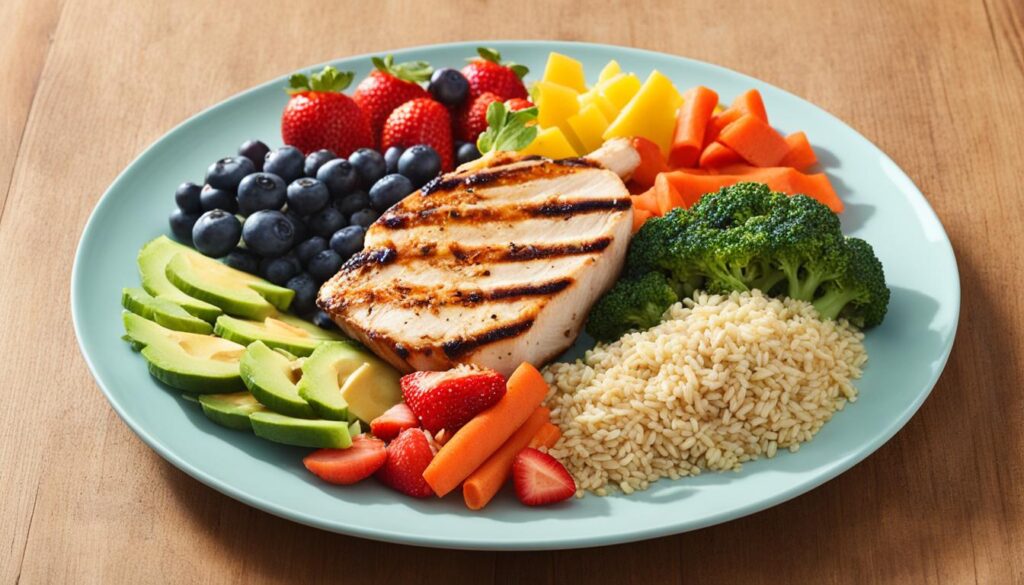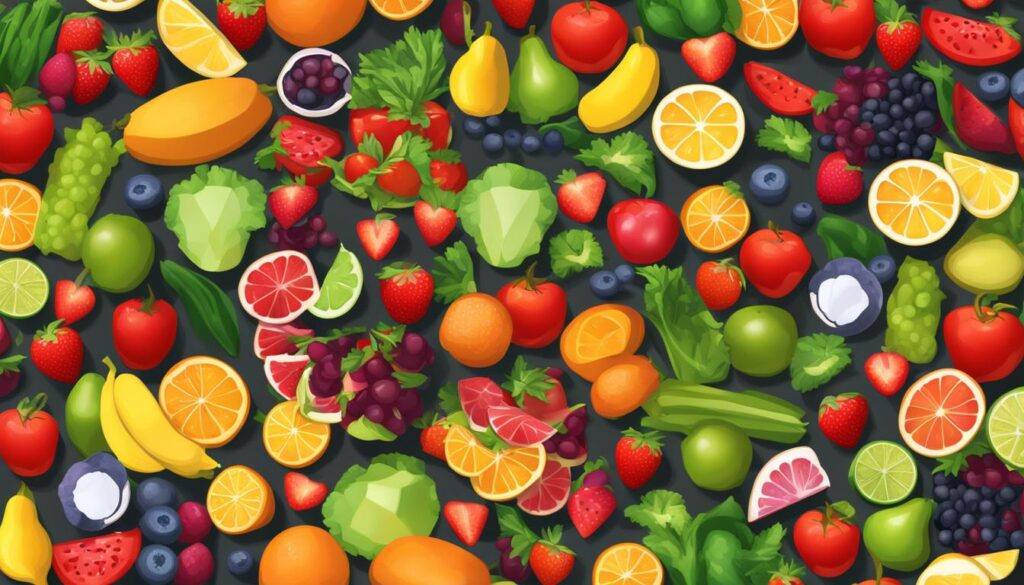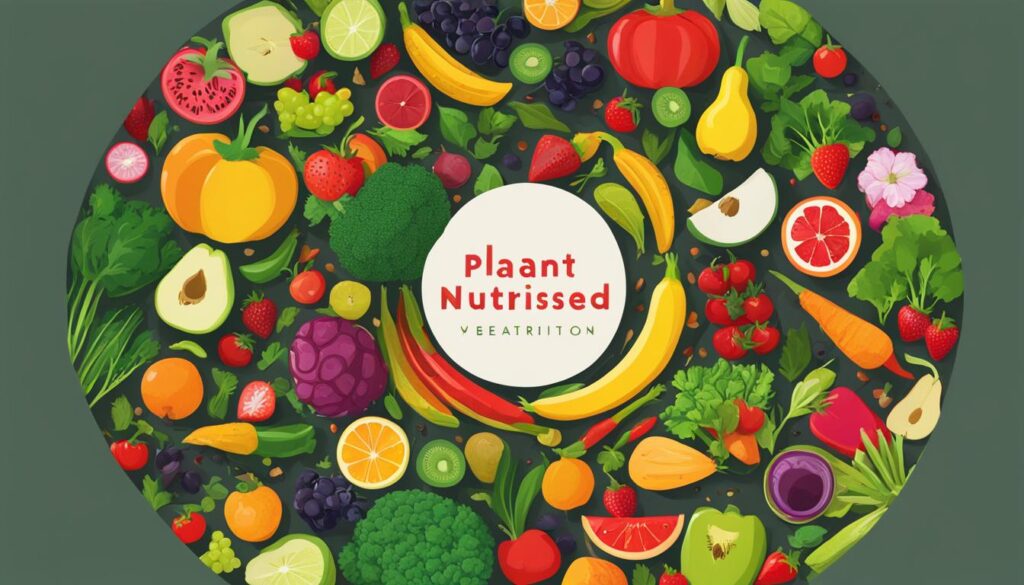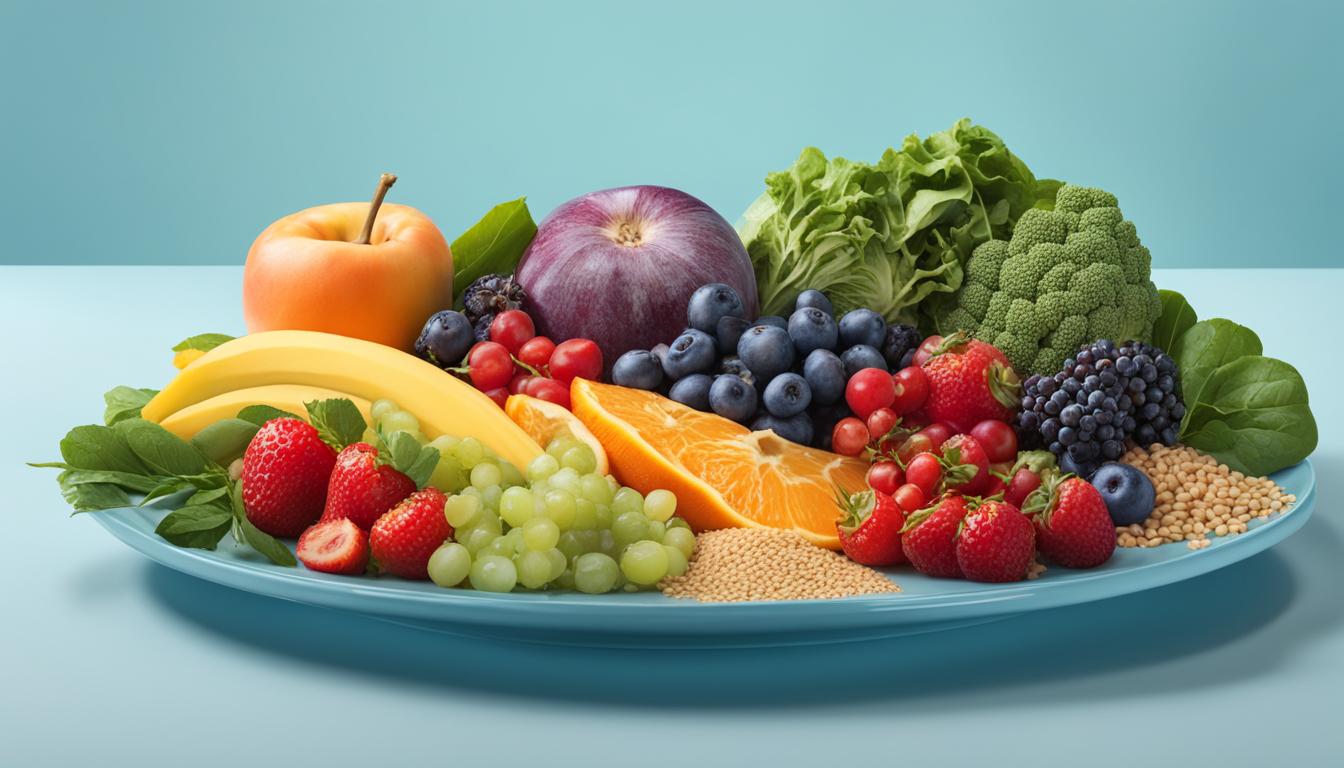Embarking on a path to better health can sometimes feel like navigating through a dense forest of fad diets and conflicting nutrition advice. But fear not—I’m here to clear the path with trusted nutrition guides for weight management and health. My insights are drawn from established nutrition education principles, designed to cater to a spectrum of lifestyles. Whether you’re an entrepreneur on-the-go, a stay-at-home parent, or someone in-between, my healthy eating tips and balanced diet plans are tailored to fit your daily rhythm and your wellness goals.
As someone deeply engrossed in the essence of nutrition advice, my approach harnesses the wisdom from reputable sources like Harvard University’s Healthy Eating Plate. It’s all about quality: half of your plate filled with the colors of various fruits and vegetables, and the other half split between wholesome grains and prime protein sources. Healthy oils and hydration also play starring roles in this nutritional playbook, not forgetting the vital act of keeping your body moving.
Key Takeaways
- Adopt balanced diet plans for different lifestyles that align with well-established health guidelines.
- Half of every meal should comprise fruits and vegetables for optimal nutrition and disease prevention.
- Make informed food choices based on the quality of macronutrients over quantity, with a focus on whole grains and lean proteins.
- Incorporate healthy fats like olive oil into your diet and prioritize hydration with water over sugary drinks.
- Pair sound nutrition education with regular physical activity for sustainable weight management and health.
Understanding Macronutrients and Micronutrients in Your Daily Diet

Embarking on the journey to a healthier self requires a fundamental knowledge of the nutrients that power our bodies. The right balance of macronutrients – the proteins, carbohydrates, and fats that give us energy – forms the core of balanced diet plans. But there’s more to the story. Micronutrients, though needed in smaller quantities, are equally vital in driving our body’s countless biochemical processes. I’m here to shed light on how they fit into your daily diet for improved health and effective weight loss strategies.
Maximizing Health with Balanced Macronutrient Intake
My nutrition guides for weight management and health emphasize the importance of understanding macronutrients. They should not be taken at face value but seen as sources of nourishment that come with their unique benefits and functions. Proteins, for instance, are more than just muscle builders; they’re key players in enzyme and hormone production. Carbohydrates fuel our most basic activities, while fats support cell structure and provide essential fatty acids. As a firm believer in healthy lifestyle habits, I consider it my duty to provide the best nutrition advice that aligns with your individual needs for a well-rounded diet.
Unlocking the Power of Vitamins and Minerals in Your Meals
Let’s not forget the dynamic duo of the nutrient world: vitamins and minerals. These micronutrients are powerful allies when incorporated into your daily diet. They not only prevent deficiencies that could lead to serious health issues but also bolster the body’s defenses and overall function. My nutrition education resources are packed with tips on making the most of these micronutrients, often suggesting nutritional supplements when diet alone doesn’t meet the recommended intake.
Tip: Try adding a handful of berries to your morning oatmeal – you’ll not only brighten up your breakfast with a pop of color but also boost your intake of essential vitamins and antioxidants.
To demonstrate how you can apply this knowledge to your own meals, let’s look at a simple breakdown of how these nutrients play a role in our daily food choices:
| Nutrient Category | Examples | Benefits for Health |
|---|---|---|
| Proteins | Chicken, Fish, Beans, Nuts | Supports muscle repair and hormone production |
| Carbohydrates | Whole Grains, Vegetables, Fruits | Provides energy and aids in digestive health |
| Fats | Avocados, Olive Oil, Seeds | Sustain cell structure and heart health |
| Vitamins | Oranges (Vitamin C), Carrots (Vitamin A) | Boosts immune system and vision health |
| Minerals | Spinach (Iron), Dairy (Calcium) | Enhances oxygen transport and bone strength |
By integrating this variety and quality of foods into your diet, you’ll take significant strides toward a fulfilling and healthy lifestyle. Remember, it’s not always about major overhauls; sometimes, the subtle shifts in our food choices lead to the most sustainable changes in our health and well-being.
Building Blocks of a Balanced Diet

When we talk about balanced diet plans, we’re referring to the perfect harmony of nutrients that fuel our bodies. As I navigate the landscape of nutrition education, I understand the importance of making informed food choices. A plate filled with a rainbow of fruits and vegetables is more than aesthetically pleasing—it’s a wealth of vitamins, minerals, and fiber.
Whole grains are another pillar in the architecture of a healthful diet. They bring not just essential nutrients, such as B vitamins, but also a sense of fullness that can curb overeating. When seasoned with a bit of nutrition advice, swapping out refined grains for their whole counterparts is a simple shift that can have profound impacts on health.
Utilizing quality proteins—like fish, poultry, beans, and nuts—adds robustness to my arsenal of healthy recipes. Each meal turns into an opportunity for introducing both flavor and vital amino acids. Here’s my approach for assembling a meal that’s as beneficial as it is delicious:
- Begin with color—the vivid tones of fruits and veggies signal an abundance of nutrients.
- Enhance the base with whole grains for an enduring energy source.
- Top it off with a lean protein, such as a grilled salmon or a scoop of hummus.
- Drizzle with a healthy fat, like extra virgin olive oil, for a satisfying finish.
To further illustrate, let’s compare two typical lunch options:
| Lunch Option | Fruits/Veggies | Whole Grains | Proteins | Healthy Fats |
|---|---|---|---|---|
| Salmon Quinoa Bowl | Mixed Greens, Tomato | Quinoa | Grilled Salmon | Avocado Slices |
| Chicken Caesar Wrap | Romaine Lettuce | Whole Wheat Wrap | Grilled Chicken | Caesar Dressing (light) |
In the context of healthy eating tips, the first option is a quintessential model of balance. My preference leans toward meals like the Salmon Quinoa Bowl, where every component serves a nutritional purpose, synergistically working to stabilize blood sugar and keep the energy levels steady.
By adhering to these principles, I find that maintaining a balanced diet becomes less about strict regimes and more about making better, more colorful choices. Let the natural palette of wholesome foods inspire your next kitchen creation!
Nourishing Your Body with Plant-Based Nutrition

Embracing a plant-based diet is more than a fleeting trend; it’s a pathway to enhanced well-being and sustainable living. The beauty of a whole-food plant-based diet lies in its simplicity and the profound impact it can have on our health. It’s fascinating how we can draw such a vast array of essential nutrients from the earth’s bounty.
Essentials of a Whole-Food Plant-Based Diet
In my journey towards a healthier lifestyle, I’ve found that focusing on vegetables, fruits, whole grains, nuts, and seeds brings out the full spectrum of flavors and nutrients intended by nature. Healthy eating tips that I’ve gathered include incorporating a variety of colors in your meals—this often means a wider range of vitamins and minerals. It’s not just about having a balanced diet plan; it’s about experiencing the natural richness of plant-based foods.
Transitioning to a Plant-Based Lifestyle: A Beginner’s Guide
Making the switch doesn’t have to be overwhelming. As someone who’s navigated this path, I recommend starting with small, manageable steps. Introduce more healthy eating tips into your routine by swapping out certain meals for plant-based alternatives. Engage with meal planning tips—like batch cooking legumes or prepping colorful veggie snacks—to ensure you always have healthy options on hand. And remember, nutritional supplements can be useful, particularly as you’re learning about new sources of plant-based proteins and how to incorporate them into your diet.
To all beginners, my advice is straightforward: be patient with yourself, and stay curious. There’s a whole world of plant-based nutrition guides to explore and my experience says the journey is well worth it.
Diet and Nutrition Guide Strategies for Active Individuals

As an athlete or someone who leads an active lifestyle, I’ve learned that the typical dietary recommendations don’t always apply. My personal experience and research emphasize the importance of a strategic approach to diet and nutrition guides for athletes and active individuals. It’s no secret that, to sustain higher energy levels and ensure rapid recovery, there’s a need to consume a diet rich in complex carbohydrates and diverse proteins.
For instance, my pre-workout meals are typically centered around carbohydrates such as oatmeal or quinoa, which provide me with a slow and steady source of energy. Post-workout, I focus on protein intake to aid in muscle repair and recovery, often incorporating a nutritional supplement shake, or a meal with lean chicken or fish.
Beyond macronutrients, you’ll find my pantry stocked with a variety of supplements. I’m meticulous about which nutritional supplements to include in my regimen. These are often selected based on their ability to support muscle growth, recovery, and overall health. However, I advise against over-reliance on supplements, emphasizing the importance of meeting nutritional needs through whole foods wherever possible.
I’ve also found that healthy eating tips don’t just stop at what you eat, but when you eat plays a pivotal role as well. Timing your meals and snacks to correspond with your training can dramatically improve your performance and energy levels.
- Complex Carbohydrates: such as sweet potatoes, brown rice, or whole-grain pasta.
- Lean Proteins: like turkey, eggs, cottage cheese, or tofu.
- Healthy Fats: think avocados, nuts, or seeds.
- Hydration: water is crucial, but I also include electrolyte-replenishing beverages post-workout.
In my guide, I also discuss weight loss strategies for active individuals. These strategies are often couched in myths, but my experience highlights the significance of a balance between calorie input and output, and the value of meal timing and macronutrient balance.
Finally, I can’t stress enough the importance of avoiding processed and sugary foods. A clean diet greatly impacts performance and health. By sharing my knowledge and experience, my goal is to help fellow athletes and active folks create a sustainable and performance-enhancing nutrition plan.
Conclusion
The essence of a sustaining nutrition strategy doesn’t hinge on the extreme elimination of indulgences or adopting an austere diet. It’s rooted in the joy of feeling energized, the uplifted state of your health, and the balance in your mood. My perspective on healthy lifestyle habits is to embed moderation and mindfulness, ensuring every bit of bliss from a dark chocolate square or a scoop of your cherished ice cream adds to your life, not your worries. It’s this balance that allows for healthy recipes and occasional treats to coexist, side by side.
Integrating Healthy Eating Practices into Everyday Life
Consistency in our diet is paramount, and that’s why I champion the cause of meal planning tips that support a routine teeming with nutritious choices without forsaking flavor or personal preference. These practices are not born overnight; they evolve from incremental adjustments—trading a side of fries for a garden salad, for instance. My role in delivering nutrition advice is to ensure these adjustments are manageable and gratifying, ultimately sculpting a balanced diet plan that resonates with your unique lifestyle.
Embracing a Diverse Diet for Optimal Well-being
The path to wellness is paved with diversity in your meals. It’s through a kaleidoscope of foods that we meet our body’s vast nutritional demands. From the antioxidants rich in berries to the heart-healthy fats of avocados, the palette is endless. Lean proteins, whole grains, and a rainbow of vegetables carve out a robust balanced diet plan bolstering not just your physical health but your vitality. Remember, starting the journey toward weight management and wholesome living can be as simple as incorporating an extra helping of greens into your dinner. It’s the small, sustainable steps that forge a lifetime of health, and my diet and nutrition guides are here to lead the way.

